Tracheal suction at birth in non-vigorous neonates born through meconium-stained amniotic fluid
- PMID: 34133025
- PMCID: PMC8207961
- DOI: 10.1002/14651858.CD012671.pub2
Tracheal suction at birth in non-vigorous neonates born through meconium-stained amniotic fluid
Abstract
Background: Neonates born through meconium-stained amniotic fluid (MSAF) are at risk of developing meconium aspiration syndrome (MAS). Neonates who are non-vigorous due to intrapartum asphyxia are at higher risk of developing MAS. Clearance of meconium from the airways below the vocal cords by tracheal suction before initiating other steps of resuscitation may reduce the risk of development of MAS. However, conducting tracheal suction may not only be ineffective, it may also delay effective resuscitation, thus prolonging and worsening the hypoxic-ischaemic insult. OBJECTIVES: To evaluate the efficacy of tracheal suctioning at birth in preventing meconium aspiration syndrome and other complications among non-vigorous neonates born through meconium-stained amniotic fluid.
Search methods: We used the standard search strategy of Cochrane Neonatal to search Cochrane Central Register of Controlled Trials (CENTRAL 2020, Issue 11) in the Cochrane Library; Ovid MEDLINE(R) and Epub Ahead of Print, In-Process & Other Non-Indexed Citations, Daily and Versions(R) (1946 to 25 November 2020) for randomised controlled trials (RCTs) and quasi-randomised trials. We also searched clinical trials databases and the reference lists of retrieved articles for RCTs and quasi-randomised trials (up to November 2020).
Selection criteria: We included studies enrolling non-vigorous neonates born through MSAF, if the intervention being tested included tracheal suction at the time of birth with an intent to clear the trachea of meconium before regular breathing efforts began. Tracheal suction could be performed with an endotracheal tube or a wide-gauge suction catheter. Neonates in the control group should have been resuscitated at birth with no effort made to clear the trachea of meconium.
Data collection and analysis: Two review authors independently assessed trial quality and extracted data, consulting with a third review author about any disagreements. We used standard Cochrane methodological procedures, including assessment of risk of bias for all studies. Our primary outcomes were: MAS; all-cause neonatal mortality; and incidence of hypoxic-ischaemic encephalopathy (HIE). Secondary outcomes included: need for mechanical ventilation; incidence of pulmonary air leaks; culture-positive sepsis; and persistent pulmonary hypertension. We used the GRADE approach to assess the certainty of evidence.
Main results: We included four studies (enrolling 581 neonates) in the review. All four studies were conducted in tertiary care hospitals in India. Three of the four studies included neonates born at and beyond term gestation, whereas one included neonates born at and beyond 34 weeks of gestation. Due to the nature of the intervention, it was not possible to blind the healthcare personnel conducting the intervention. Tracheal suction compared to no suction in non-vigorous neonates born through MSAF In non-vigorous infants, no differences were noted in the risks of MAS (RR 1.00, 95% CI 0.80 to 1.25; RD 0.00, 95% CI -0.07 to 0.08; 4 studies, 581 neonates) or all-cause neonatal mortality (RR 1.24, 95% CI 0.76 to 2.02; RD 0.02, 95% CI -0.03 to 0.07; 4 studies, 575 neonates) with or without tracheal suctioning. No differences were reported in the risk of any severity HIE (RR 1.05, 95% CI 0.68 to 1.63; 1 study, 175 neonates) or moderate to severe HIE (RR 0.68, 95% CI 0.43 to 1.09; 1 study, 152 neonates) among non-vigorous neonates born through MSAF. We are also uncertain as to the effect of tracheal suction on other outcomes such as incidence of mechanical ventilation (RR 0.99, 95% CI 0.68 to 1.44; RD 0.00, 95% CI -0.06 to 0.06; 4 studies, 581 neonates), pulmonary air leaks (RR 1.22, 95% CI 0.38 to 3.93; RD 0.00, 95% CI -0.02 to 0.03; 3 studies, 449 neonates), persistent pulmonary hypertension (RR 1.29, 95% CI 0.60 to 2.77; RD 0.02, 95% CI -0.03 to 0.06; 3 studies, 406 neonates) and culture-positive sepsis (RR 1.32, 95% CI 0.48 to 3.57; RD 0.01, 95% CI -0.03 to 0.05; 3 studies, 406 neonates). All reported outcomes were judged as providing very low certainty evidence.
Authors' conclusions: We are uncertain about the effect of tracheal suction on the incidence of MAS and its complications among non-vigorous neonates born through MSAF. One study awaits classification and could not be included in the review. More research from well-conducted large trials is needed to conclusively answer the review question.
Copyright © 2021 The Cochrane Collaboration. Published by John Wiley & Sons, Ltd.
Conflict of interest statement
SN has no interest to declare.
AT works as Associate Professor, Department of Pediatrics, AIIMS, New Delhi.
DC works as a Professor of Neonatology, Government Medical College Hospital, Chandigarh, India.
Figures
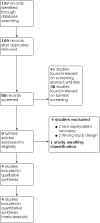
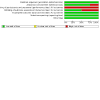
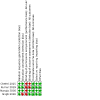

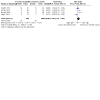
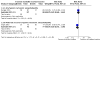
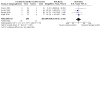
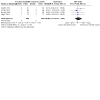
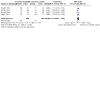
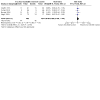
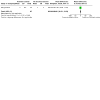
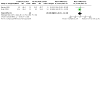
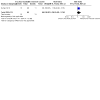
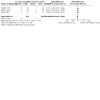
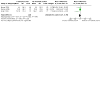
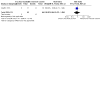
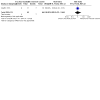
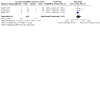

Update of
- doi: 10.1002/14651858.CD012671
Similar articles
-
Yield of meconium in non-vigorous neonates undergoing endotracheal suctioning and profile of all neonates born through meconium-stained amniotic fluid: a prospective observational study.Paediatr Int Child Health. 2018 Nov;38(4):266-270. doi: 10.1080/20469047.2018.1508809. Epub 2018 Aug 30. Paediatr Int Child Health. 2018. PMID: 30160618
-
Outcomes of endotracheal suctioning in non-vigorous neonates born through meconium-stained amniotic fluid: a systematic review and meta-analysis.Arch Dis Child Fetal Neonatal Ed. 2021 Jan;106(1):31-38. doi: 10.1136/archdischild-2020-318941. Epub 2020 Jun 19. Arch Dis Child Fetal Neonatal Ed. 2021. PMID: 32561566 Free PMC article.
-
Endotracheal suctioning for prevention of meconium aspiration syndrome: a randomized controlled trial.Eur J Pediatr. 2019 Dec;178(12):1825-1832. doi: 10.1007/s00431-019-03463-z. Epub 2019 Oct 7. Eur J Pediatr. 2019. PMID: 31588974 Clinical Trial.
-
Outcomes of Nonvigorous Neonates Born through Meconium-Stained Amniotic Fluid after a Practice Change to No Routine Endotracheal Suctioning from a Developing Country.Am J Perinatol. 2024 Jul;41(9):1163-1170. doi: 10.1055/a-1797-7005. Epub 2022 Mar 14. Am J Perinatol. 2024. PMID: 35288884
-
Surfactant therapy via thin catheter in preterm infants with or at risk of respiratory distress syndrome.Cochrane Database Syst Rev. 2021 May 10;5(5):CD011672. doi: 10.1002/14651858.CD011672.pub2. Cochrane Database Syst Rev. 2021. PMID: 33970483 Free PMC article.
Cited by
-
A retrospective cohort study of tracheal intubation for meconium suction in nonvigorous neonates.Zhongguo Dang Dai Er Ke Za Zhi. 2022 Jan 15;24(1):65-70. doi: 10.7499/j.issn.1008-8830.2109178. Zhongguo Dang Dai Er Ke Za Zhi. 2022. PMID: 35177178 Free PMC article. Chinese, English.
-
Clinical characteristics of meconium aspiration syndrome in neonates with different gestational ages and the risk factors for neurological injury and death: A 9-year cohort study.Front Pediatr. 2023 Mar 7;11:1110891. doi: 10.3389/fped.2023.1110891. eCollection 2023. Front Pediatr. 2023. PMID: 36959842 Free PMC article.
-
Meconium aspiration syndrome: a comprehensive review.J Perinatol. 2023 Oct;43(10):1211-1221. doi: 10.1038/s41372-023-01708-2. Epub 2023 Aug 5. J Perinatol. 2023. PMID: 37543651 Review.
-
Impact of perinatal factors on meconium aspiration syndrome in full-term newborns and the construction of a column chart prediction model: An observational study.Medicine (Baltimore). 2024 May 17;103(20):e38279. doi: 10.1097/MD.0000000000038279. Medicine (Baltimore). 2024. PMID: 38758867 Free PMC article.
-
The Care of Preterm and Term Newborns with Respiratory Conditions: A Systematic Synthesis of Evidence from Low- and Middle-Income Countries.Neonatology. 2025;122(Suppl 1):152-172. doi: 10.1159/000542482. Epub 2024 Nov 14. Neonatology. 2025. PMID: 39541964 Free PMC article.
References
References to studies included in this review
Chettri 2015 {published data only}
Kumar 2019 {published data only}
Nangia 2016 {published data only}
Singh 2018 {published data only}
-
- Singh SN, Saxena S, Bhriguvanshia A, Kumar M, Chandrakanta S. Effect of endotracheal suctioning just after birth in non-vigorous infants born through meconium stained amniotic fluid: a randomized controlled trial. Clinical Epidemiology and Global Health 2019;7(2):165-70. [DOI: 10.1016/j.cegh.2018.03.006] - DOI
References to studies excluded from this review
Daga 1994 {published data only}
Linder 1988 {published data only}
Ting 1975 {published data only}
Yoder 1994 {published data only}
-
- Yoder BA. Meconium-stained amniotic fluid and respiratory complications: impact of selective tracheal suction. Obstetrics and Gynecology 1994;83(1):77-84. [PMID: ] - PubMed
References to studies awaiting assessment
CTRI/2012/08/002920 {published data only}
-
- CTRI/2012/08/002920. Endotracheal suctioning versus no endotracheal suctioning in non vigorous term neonates born through meconium stained amniotic fluid - a pilot randomised controlled trial [To know the usefulness of aspirating deeper airway in babies who passes stool before delivery and not cried after birth]. ctri.nic.in/Clinicaltrials/pdf_generate.php?trialid=4503&EncHid=&... (first received 27 August 2012).
Additional references
Berkus 1994
-
- Berkus MD, Langer O, Samueloff A, Xenakis EM, Field NT, Ridgway LE. Meconium stained amniotic fluid: increased risk for adverse neonatal outcome. Obstetrics and Gynaecology 1994;84(1):110-5. [PMID: ] - PubMed
Carson 1976
Chiruvolu 2018
Covidence [Computer program]
-
- Covidence. Version accessed 5 March 2021. Melbourne, Australia: Veritas Health Innovation. Available at covidence.org.
Dargaville 2006
Edwards 2019
Fanaroff 2008
GRADEpro GDT [Computer program]
-
- GRADEpro GDT. Version accessed 16 July 2018. Hamilton (ON): McMaster University (developed by Evidence Prime). Available at gradepro.org.
Gregory 1974
Halliday 2001
Higgins 2011
-
- Higgins JP, Altman DG, Sterne JA, on behalf of the Cochrane Statistical Methods Group and the Cochrane Bias Methods Group. Chapter 8: Assessing risk of bias in included studies. In: Higgins JP, Green S, editor(s). Cochrane Handbook for Systematic Reviews of Interventions Version 5.1.0 (updated March 2011). The Cochrane Collaboration, 2011. Available from handbook.cochrane.org.
Higgins 2020
-
- Higgins JP, Thomas J, Chandler J, Cumpston M, Li T, Page MJ, et al (editors). Cochrane Handbook for Systematic Reviews of Interventions version 6.1 (updated September 2020). Cochrane, 2020. Available from www.training.cochrane.org/handbook.
Miller 1981
Ovelman 2020
-
- Ovelman C, Eckert C, Friesen C. Validating Cochrane Neonatal’s standard search databases: is it okay to stop searching Embase? Advances in Evidence Synthesis: special issue. Cochrane Database of Systematic Reviews 2020;9 Suppl 1:320. [DOI: 10.1002/14651858.CD202001/full] - DOI
Perlman 2010
-
- Perlman JM, Wyllie J, Kattwinkel J, Atkins DL, Chameides L, Goldsmith JP, et al, Neonatal Resuscitation Chapter Collaborators. Part 11: Neonatal resuscitation: 2010 International Consensus on Cardiopulmonary Resuscitation and Emergency Cardiovascular Care Science with treatment recommendations. Circulation 2010;122(16 Suppl 2):S516-38. [DOI: 10.1161/CIRCULATIONAHA.110.971127] [PMID: 20956259 ] - DOI - PubMed
Phatak 1996
-
- Phatak P, Misra N. Developmental assessment scales for Indian infants (DASII) 1-30 months - revision of Baroda norms with indigenous material. Psychological Studies 1996;41:55-6.
Phattraprayoon 2020
-
- Phattraprayoon N, Tangamornsuksan W, Ungtrakul T. Outcomes of endotracheal suctioning in non-vigorous neonates born through meconium-stained amniotic fluid: a systematic review and meta-analysis. Archives of Disease in Childhood. Fetal and Neonatal Edition 2021;106(1):31-8. [DOI: 10.1136/archdischild-2020-318941] [PMID: ] - DOI - PMC - PubMed
Sarnat 1976
Schünemann 2013
-
- Schünemann H, Brożek J, Guyatt G, Oxman A, editor(s). Handbook for grading the quality of evidence and the strength of recommendations using the GRADE approach (updated October 2013). GRADE Working Group, 2013. Available from gdt.guidelinedevelopment.org/app/handbook/handbook.html.
Suresh 1994
-
- Suresh GK, Sarkar S. Delivery room management of infants born through thin meconium stained liquor. Indian Pediatrics 1994;31(10):1177-81. [PMID: ] - PubMed
Thompson 1997
Trevisanuto 2020
-
- Trevisanuto D, Strand ML, Kawakami MD, Fabres J, Szyld E, Nation K, et al, International Liaison Committee on Resuscitation Neonatal Life Support Task Force. Tracheal suctioning of meconium at birth for non-vigorous infants: a systematic review and meta-analysis. Resuscitation 2020;149:117-26. [DOI: 10.1016/j.resuscitation.2020.01.038] [PMID: 32097677] - DOI - PubMed
Tybulewicz 2004
Tyler 1978
-
- Tyler DC, Murphy J, Cheney FW. Mechanical and chemical damage to lung tissue caused by meconium aspiration. Pediatrics 1978;62(4):454-9. [PMID: ] - PubMed
Usher 1988
Vain 2004
-
- Vain N, Szyld E, Prudent L, Wiswell TE, Aguilar AM, Vivas NI. Oropharyngeal and nasopharyngeal suctioning of meconium-stained neonates before delivery of their shoulders: multicentre, randomised controlled trial. Lancet 2004;364(9434):597–602. [DOI: 10.1016/S0140-6736(04)16852-9] [PMID: ] - DOI - PubMed
Wiswell 1993
Wiswell 1999
-
- Wiswell TE, Fuloria M. Management of meconium-stained amniotic fluid. Clinics in Perinatology 1999;26(3):659-68. [PMID: ] - PubMed
Wiswell 2000
World Health Organization 2012
-
- World Health Organization. Guidelines on basic newborn resuscitation. World Health Organization, 2012. [ISBN: 978 92 4 150369 3] - PubMed
Wyckoff 2015
-
- Wyckoff MH, Aziz K, Escobedo MB, Kapadia VS, Kattwinkel J, Perlman JM, et al. Part 13: Neonatal Resuscitation: 2015 American Heart Association Guidelines Update for Cardiopulmonary Resuscitation and Emergency Cardiovascular Care (Reprint). Pediatrics 2015;136(Suppl 2):S196-218. [DOI: 10.1542/peds.2015-3373G] [PMID: 26471383] - PubMed
Wyckoff 2021
-
- Wyckoff MH, Wyllie J, Aziz K, Almeida MF, Fabres J, Fawke J, et al. Neonatal Life Support: 2020 International Consensus on Cardiopulmonary Resuscitation and Emergency Cardiovascular Care Science With Treatment Recommendations. Circulation 2021;142:S185–S221. [DOI: 10.1161/CIR.0000000000000895] - DOI - PubMed
References to other published versions of this review
Publication types
MeSH terms
Substances
LinkOut - more resources
Full Text Sources
Miscellaneous

